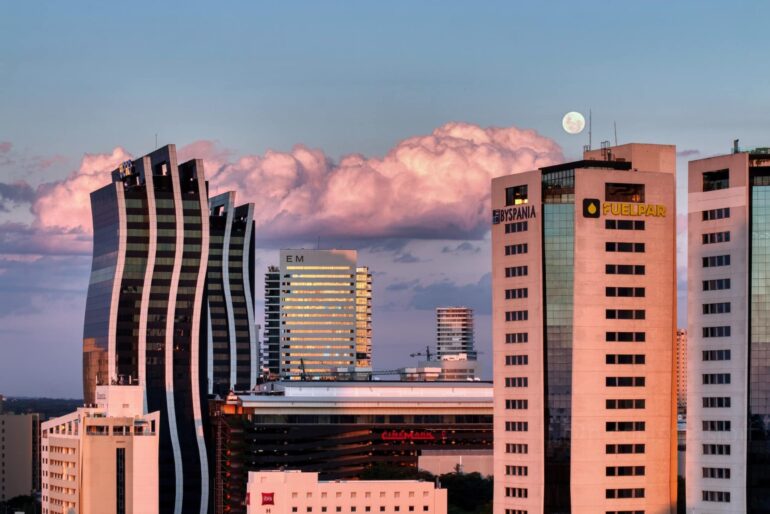Fun Fact: A recently published study has revealed that Asunción holds the title of the city with the most rooftops per square meter in all of South America. The Minister of Tourism highlighted this fact about Asunción’s rooftops during its assessment of the impact of over 40,000 tourists who visited Paraguay for the Copa Sudamericana final.
The “Recover and Save the Economy” report is part of a tourism recovery plan developed during the most critical phase of the COVID-19 pandemic. Alberto de la Fuente, from the consultancy Moratti Strategies, explained in an interview that this study was conducted between July and November 2020 to prepare the hospitality sector for the reopening of borders.
Asunción’s rooftops: A key differentiator
“To boost tourism, you need to offer unique selling points. This study aimed to identify those differentiators, even the smallest ones. One notable discovery was that Asunción is the city with the most rooftops per square meter,” said De la Fuente.
There were some clarifications, however: “This doesn’t mean that Asunción has more rooftops in absolute terms than other cities, like Mexico City. The analysis considers comparative factors such as square meters and population, similar to how GDP per capita is calculated in economics.”
The potential of the “Rooftop Route”
The study suggests creating a “Rooftop Route,” a tourist circuit allowing visitors to explore the city’s most iconic terraces. From the Bourbon Hotel with its poolside terrace to the Sheraton, the World Trade Center, and downtown venues like Negroni, the proposal seeks to capitalise on terraces offering stunning views, bars, and unique experiences.
“This type of initiative could position Asunción similarly to how Lima is leveraging bachelor party circuits,” added De la Fuente.
Asunción’s Rooftops: A model for tourism growth
With over 40,000 tourists recorded just two weeks ago, Paraguay is showing signs of establishing itself as an emerging destination in South America. Leveraging the uniqueness of its rooftops is a strategic step toward strengthening its tourism offerings.
“I haven’t encountered this diversity in other countries. This is a standout feature—the diversity within such a compact area. That’s the beauty of it. The focus on square meters emphasises how a small, pleasant, safe, and easily navigable area can offer such experiences. You can take this tour and see the city from above, from the sky, offering a unique perspective in South America,” concluded De la Fuente.


